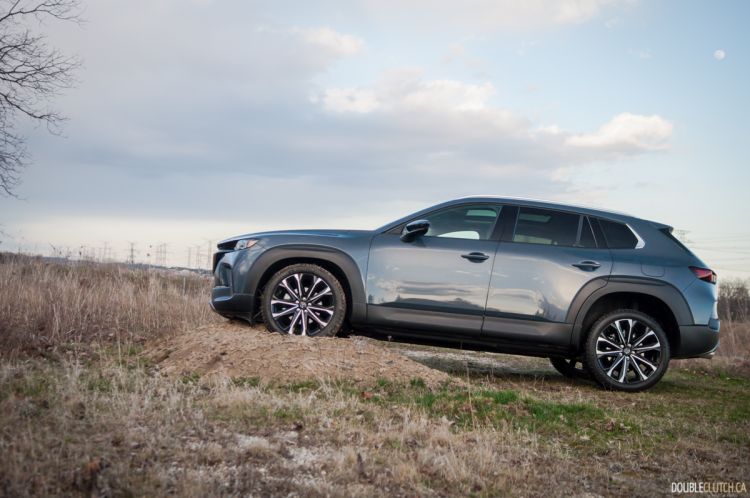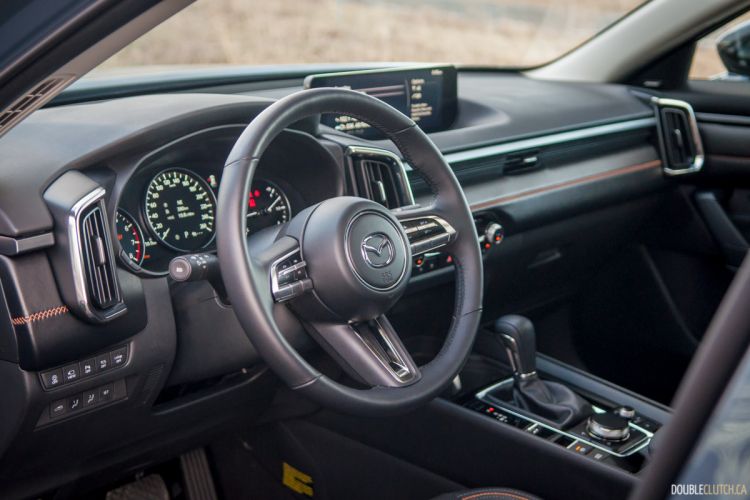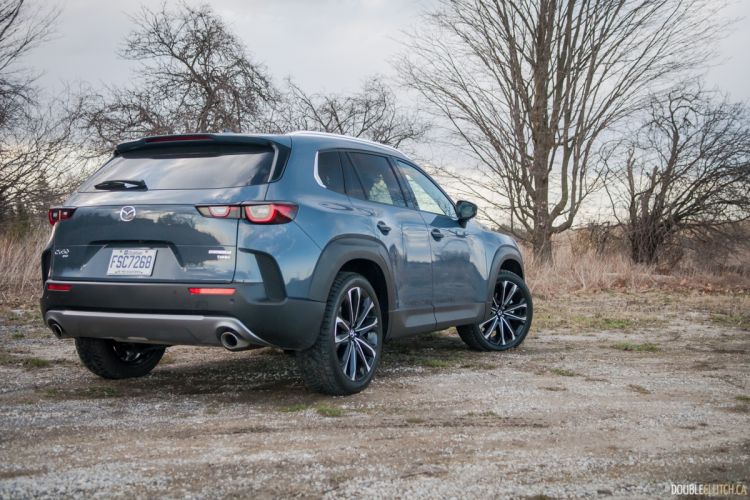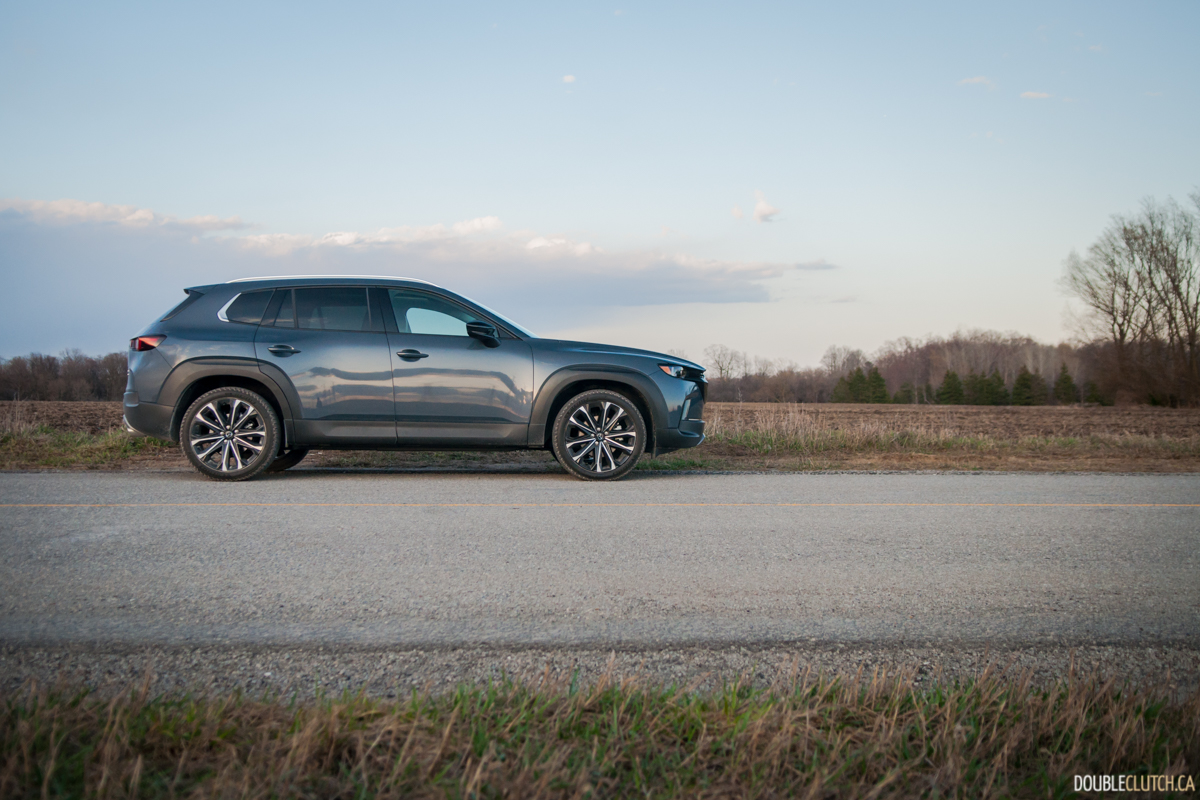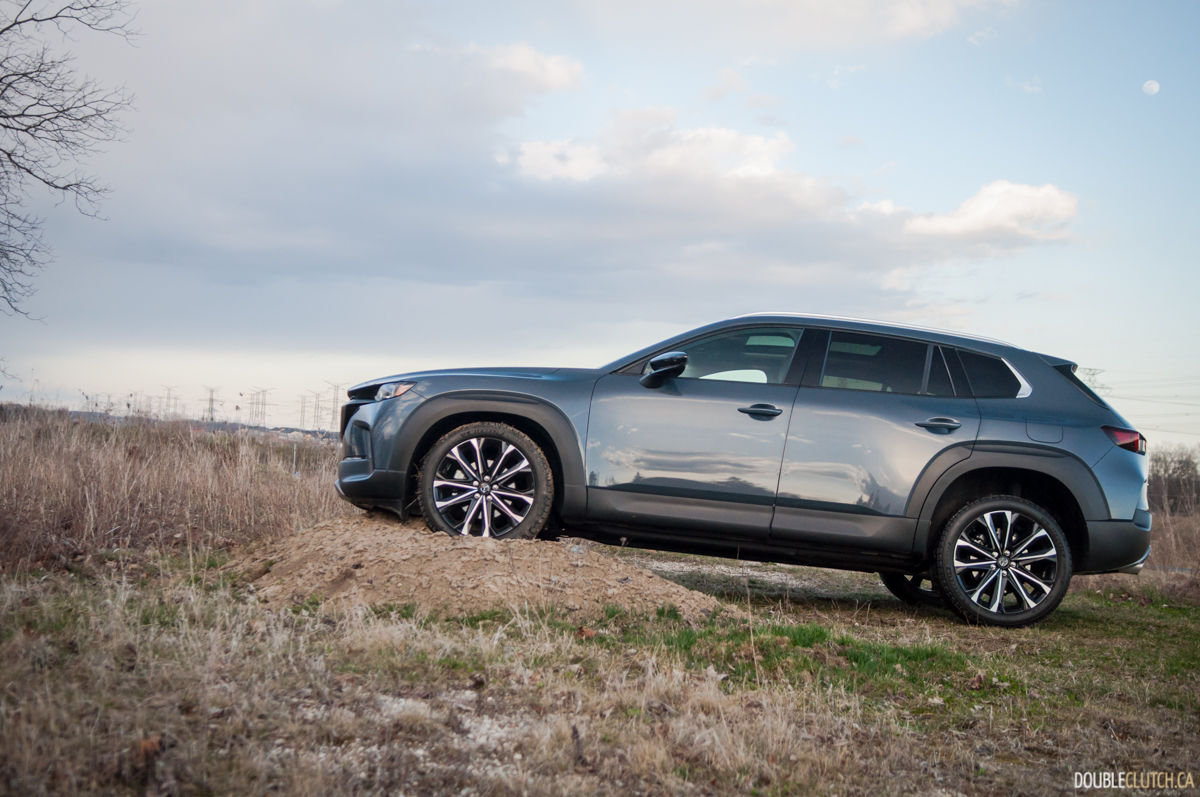Mazda needs another SUV like I need another hole in my socks, but here we are: my socks look more like Swiss cheese with each passing day, and the 2023 Mazda CX-50 joins the lineup as the automaker’s jump onto the “outdoorsy” SUV bandwagon. On first glance, it does many things right — but truth be told, the CX-50 is also a bit of a head-scratcher.
It’s not like there isn’t a market for outdoorsy sport-utes. We Canadians are insatiably hungry for compact crossovers, and lately, beefing them up with extra body cladding, more ground clearance, and chunky all-terrain tires is all the rage. We’ve seen a spate of automakers fill this niche, and it was inevitable that Mazda would join in on the fun with the CX-50. It’s an all-new model that slots into Mazda’s lineup between the CX-30 and CX-5, but it doesn’t replace the CX-5. Confused yet?
It’s not really the why that makes the CX-50 a head-scratcher, but rather the how. Take the Subaru Outback Wilderness or the Ford Bronco Sport, for instance: these gussied-up soft-roaders not only look the part, but also play the part with meatier tires, vast ground clearance, and plenty of tweaks under the skin versus their more vanilla siblings.
But the Mazda takes a decidedly different approach. It checks all the boxes a good Mazda should; the interior is lovely, it’s surprisingly fun to drive, and it’s all wrapped up in a package that tells your neighbours that you’re the outdoorsy type, even though you actually aren’t. The CX-50 rides a little higher than the CX-5, too; you’ve got 8.6 inches of ground clearance depending on the trim, versus about 7.5 for the CX-5. For all you rooftop tent-pitchers, Mazda has also made a point to strengthen the roof and rails. Oh, and there’s now an off-road drive mode.
And that’s basically it. Less ground clearance than the Outback Wilderness. No extra skid plates, one off-road drive mode, and for some reason, the CX-50 rolls on 20-inch wheels. Who goes off-roading with 20s and low-profile tires?! But then it dawned on me: the regular Outback still exists, because not everyone wants a Wilderness. For these folks, the CX-50 is an extremely tempting alternative.
Power comes from two distinct flavours of Mazda’s familiar 2.5-litre inline four-cylinder engine. Base CX-50s come with the normally aspirated version, putting out a simply adequate 187 horsepower and 186 pound-feet of torque. If that’s not enough kick — and chances are, you’ll want a lot more in a sport-ute that weighs just under 4,000 pounds — go for the turbocharged version of the four-banger. Pumping in regular-octane gas gives you 227 horsepower and 310 pound-feet of torque to play with, but that climbs to 256 and 320, respectively, if you feed it 93. All CX-50s are hooked up to a six-speed automatic — a traditional and smooth-shifting automatic, mind you, and not a CVT like the Outback.
At some point down the line, Mazda intends to add hybrid and plug-in hybrid powertrains to the CX-50 lineup, and that’ll do wonders for fuel economy. Officially, the CX-50 and its base engine are rated at 9.7 L/100 kilometres in the city and 7.9 on the highway, while the turbo bumps it up to 10 city and 8.1 highway. Our particular tester was fitted with the turbo-four; we saw 10.6 L/100 kilometres over a fairly even split of city and highway cruising. That’s a touch thirstier than the 10.4 we squeezed out of the Outback Wilderness over a similar mix.
The CX-50 has the Outback Wilderness matched on towing capacity, though, provided you spec the right engine. CX-50s with the normally aspirated engine can haul up to 2,000 pounds, while the turbo-four matches the Outback Wilderness and its 3,500 pounds. That’s good enough for most pop-up campers, a decently sized boat, a couple of jet-skis, or a Spec Miata race car, if you want to keep it on brand in the pit lane. Just sayin’.
Burly SUVs like the Jeep Wrangler and Toyota 4Runner sacrifice on-road comfort for off-road capability, but these outdoorsy “in-betweeners” are still easy to live with on pavement — and the CX-50 is no exception. In fact, if you’ve driven any other Mazda sport-ute, the CX-50 will feel immediately familiar. Steering is light but precise, power delivery with the turbo is pleasantly linear and smooth, and although there’s a bit more road noise than we expected, the CX-50 soaks up bumps, rough pavement, and most other imperfections well. If you value driving dynamics, the CX-50 definitely feels tighter, smoother, and more responsive than the Outback.
That familiarity continues inside the CX-50. Fit-and-finish is top-notch, and if you don’t care for the Outback’s let’s-put-almost-everything-behind-a-big-touchscreen approach, you’ll appreciate Mazda’s clean and simple, almost minimalistic approach to infotainment and instrumentation — and not to mention, the physical knobs and buttons for the climate control.
Fair warning, though: there’s a bit of a learning curve with Mazda’s knob-based infotainment, but once you’ve played around with it and set up all your presets, you’ll get used to it. And if you don’t, Apple CarPlay and Android Auto connectivity are standard, but this also brings up another head-scratcher: when you’re running CarPlay or Android Auto, the display — 8.8 inches on base, versus 10.25 on full-jam CX-50s — functions as a touchscreen. But unplug your phone, and you’re relegated to using the knob. Pick a lane and stick with it, Mazda.
Size-wise, the CX-50 is all over the place relative to the CX-30 and CX-5. If cargo space is your top priority, the CX-50 offers 889 litres with the seats up and 1,594 with them stowed — vastly roomier than the CX-30, but the CX-5 is a touch more spacious with the seats down. The CX-50 also offers the most rear-seat legroom of the bunch, but headroom is a little tight: both the CX-30 and the CX-5 offer more room for your rear passengers’ noggins.
The base CX-50 starts at $37,900, while turbo will set you back at least $45,350. The only option on our particular tester was an extra $250 for grey paint that looks more like primer, and you’re looking at $45,600 as-tested. That’s a fair bit pricier than the CX-30, but a few bucks cheaper than a full-jam CX-5 and on par with most of its competitors.
The 2023 Mazda CX-50 is a curious thing. It’s not as overtly outdoorsy than most of its competitors, but it’s also a better driver than all of them. Look at it this way: if you like the idea of the Subaru Outback but don’t like how it drives, the CX-50 may very well be for you.

